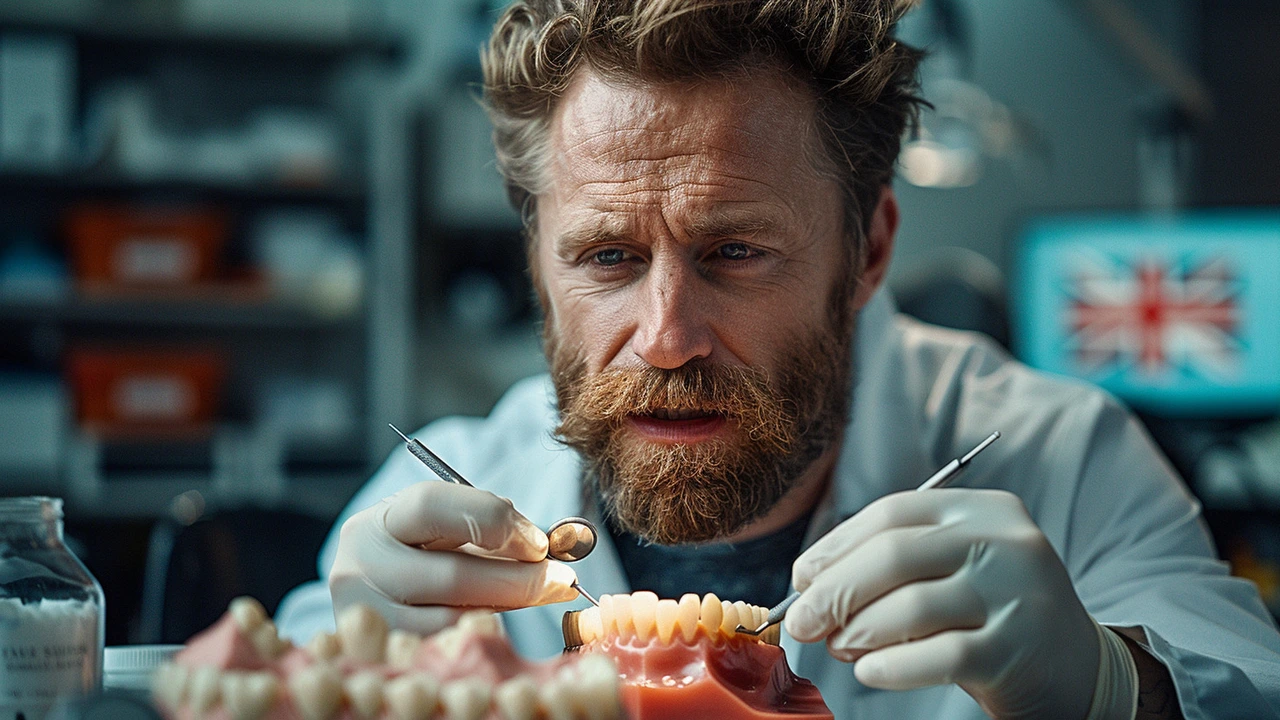
Unveiling the Hidden Enemy: Dental Calculus Under the Gums
When we talk about dental health, the spotlight often lands on cavities and visible tartar buildup. However, lurking beneath the surface, an unseen foe can wreak havoc on our gums and overall oral hygiene: dental calculus under the gums. Often undetected in its early stages, this form of calculus is a hardened form of dental plaque that has firmly attached itself to the surfaces of teeth, especially under the gum line. Understanding its causes and risks can be a game changer for our oral health.
But why exactly is this under-the-gum calculus more troubling? Aside from being a prime spot for bacteria to thrive, it's out of reach of regular brushing and flossing. Over time, it leads to inflammation, a condition widely known as gingivitis. Ignoring gingivitis can escalate to periodontitis, a severe gum disease that results in tooth loss and can even affect overall health. Now, you might think, "How does it accumulate there in the first place?" Well, it all starts with the food we consume and our oral hygiene practices. Simple carbohydrates and sugars are feasts for oral bacteria, which in turn release acids. These acids, combined with saliva and other particles, form plaque. If plaque isn't removed effectively, it hardens into calculus. Hence, the battle against gum-dwelling calculus begins with prevention.
The Arsenal Against Gum Disease: Treatment Options Explored
The journey to reclaim your oral health from the clutches of dental calculus beneath the gums involves a combination of professional treatments and diligent personal care. The first line of defense is often a visit to the dentist for an assessment. Here, tools like ultrasonic scalers and hand instruments are employed in a procedure known as scaling and root planing. This treatment meticulously removes calculus deposits and smoothens the tooth root to prevent reattachment.
But treatment doesn't stop at the dental office. Home care plays a pivotal role in preventing the recurrence of calculus buildup. Incorporating proper brushing techniques, flossing daily, and using antiseptic mouthwashes can fortify your gums against future attacks. Recent advancements in oral care, including electric toothbrushes and water flossers, offer additional support in reaching those hard-to-clean spots beneath the gums.
For cases that transcend the capabilities of scaling and root planing, more advanced treatments like laser therapy and surgical intervention may be necessary. Laser therapy targets and removes infected gum tissue, promoting regeneration of healthy gums. Surgical options, on the other hand, involve reshaping the gums to eliminate deep pockets where calculus and bacteria flourish. These treatments underscore the importance of early detection and intervention to avoid severe gum disease and its complications.
Prevention: Your Personal Shield Against Gum Disease
While the battle against dental calculus may seem daunting, equipping ourselves with the knowledge and tools for prevention truly makes a world of difference. Achieving and maintaining optimal oral hygiene is a lifelong commitment that pays dividends for our overall health. Simple yet effective practices like brushing twice daily with fluoride toothpaste, flossing regularly, and making routine visits to the dentist are the cornerstones of dental health.
Embracing a healthy diet also plays a crucial role in preventing plaque and calculus formation. Foods rich in fiber, for instance, stimulate saliva flow, which is nature's way of cleaning our teeth. Limiting the intake of sugary and acidic foods can minimize the risk of plaque buildup. Moreover, staying informed about the latest in dental health and treatments empowers us to make better decisions for our oral care regimen.
In conclusion, understanding the risks and treatments for dental calculus under the gums is just the beginning. It's the actions we take daily, from diligent oral care to choosing healthier foods, that keep the threat of gum disease at bay. Let's not underestimate the power of prevention and the impact of early treatment. Our smiles, and indeed our overall health, depend on it.
Write a comment
More Articles

Dental Mirror: How to use it for checking the status of dental abscesses
Hey there! Let's talk about a really handy tool that everyone should have at home - the dental mirror. It's not just for dentists - we can also use it to check on our dental health, specially when it comes to dental abscesses. In this post, we'll discuss how exactly to do that. So if you're curious or you have been facing some tooth discomfort, don't go anywhere! This could be just what you need to ensure your oral health is top-notch!

Ceramic braces: What to do when something goes wrong
As a guy who has been there, I can tell you that sometimes things don't go as planned with ceramic braces. This post will help you navigate unexpected issues, from bracket breakages to discomfort. Drawing from personal experiences and expert advice, I aim to give you practical tips on what steps to take when your ceramic braces don't seem right. Trust me, it’s nothing to fret about; with these insights, you’ll be a pro at handling any ceramic brace issues that come your way!

Whitening Toothpaste: Myths and Facts
Hey there, beautiful people! Today, we're going to debunk some common myths around whitening toothpaste in our latest post. We're aiming to separate fact from fiction and provide you with a true understanding of how whitening toothpaste impacts your dental hygiene. So, let's dive into it together and find out the real deal about our everyday toothpaste. Stay tuned for some enlightening facts!


